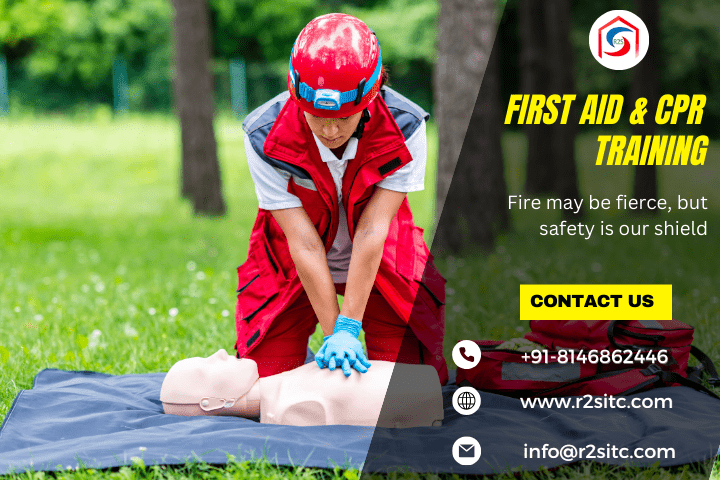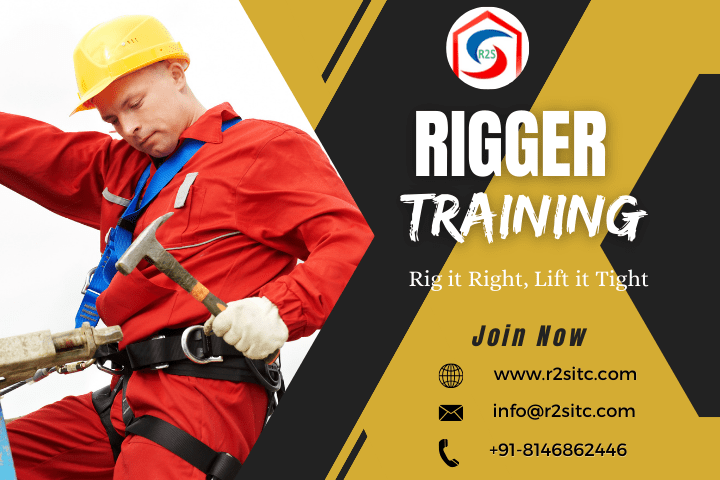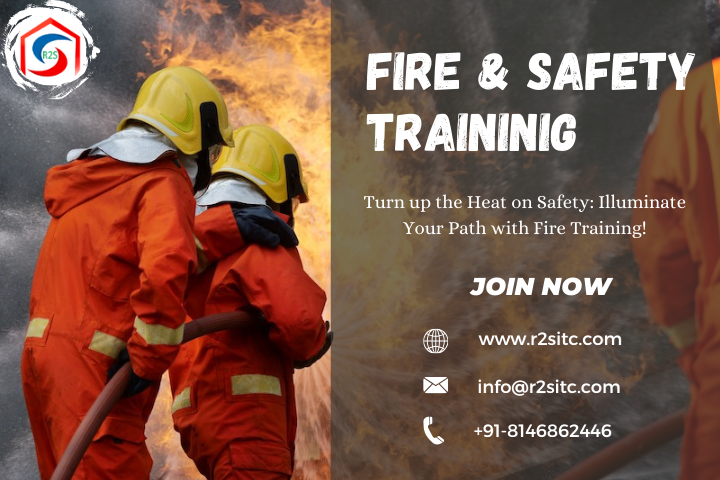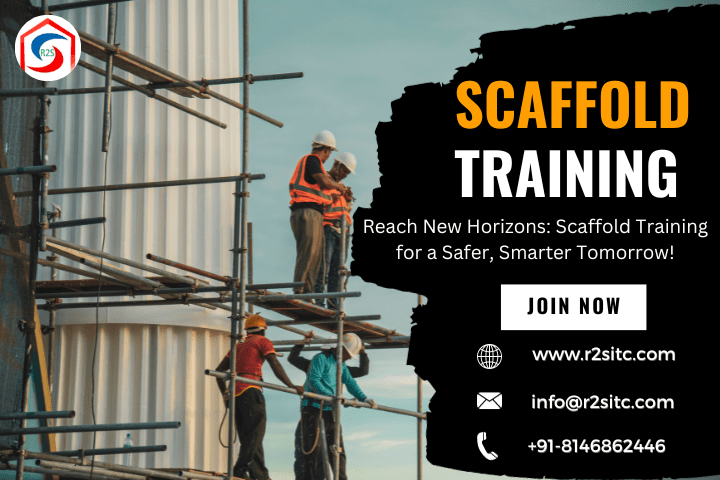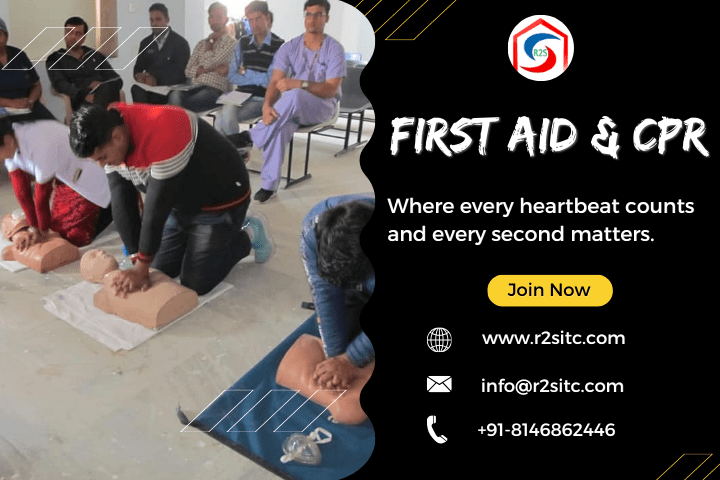ਸੁਰੱਖਿਆ ਅਤੇ ਸੀ.ਪੀ.ਆਰ: ਇਮਰਜੈਂਸੀ ਜ਼ਿੰਦਗੀ ਬਚਾਉਣ ਦੀ ਤਾਕਤ
ਇਮਰਜੈਂਸੀ ਸਥਿਤੀਆਂ ਵਿੱਚ ਹੋਣ ਵਾਲੀ ਚੰਗੀ ਦਾਖਲਤ ਵਾਸਤੇ ਪਹਿਲੇ ਦਾ ਪ੍ਰਸਿੱਧਤਾ ਸਿਖਾਈ ਦਾ ਪ੍ਰਸਿੱਧਤਾ ਕਾਫ਼ੀ ਮਹੱਤਤਵਪੂਰਨ ਹੈ। ਸੁਰੱਖਿਆ ਦੇ ਮਾਮਲੇ ਵਿੱਚ ਇਸਦਾ ਮਹੱਤਵ ਅਤੇ ਉਪਯੋਗ ਪੂਰੀ ਦੁਨੀਆ ਭਰ ਵਿੱਚ ਮਹਿਸੂਸ ਕੀਤਾ ਜਾਂਦਾ ਹੈ, ਅਤੇ ਹੋਰ ਹੋਰ ਲੋਕ ਸੁਰੱਖਿਆ ਪ੍ਰਸ਼ਿੱਕਸ਼ਣ ਅਤੇ ਸੀ.ਪੀ.ਆਰ ਦੇ ਸਿੱਖਾਈ ਦਾ ਫਾਇਦਾ ਲਿਆਉਣ ਦੇ ਤਰੀਕੇ ਨੂੰ ਤਰੱਕੀ ਦੇ ਰਾਸਤੇ ਵਿੱਚ ਰਹੇ ਹਨ। ਇਸ ਸਮਰੱਥਾ ਨਾਲ, ਰੋਡ ਟੂ ਸੁਰੱਖਿਆ ਇੰਟਰਨੈਸ਼ਨਲ ਟ੍ਰੇਨਿੰਗ ਕਨਸਲਟੈਂਸੀ (R2SITC) ਨੇ ਪਹਿਲੇ ਦਾ ਸਿੱਖਾਈ ਵਿੱਚ ਅਪਨਾ ਮਾਹਿਰਾਨਾ ਹੱਦ ਵਿੱਚ ਪ੍ਰਦਰਸ਼ਨ ਕੀਤਾ ਹੈ, ਖ਼ਾਸ ਕਰਕੇ ਪ੍ਰਥਮ ਸਹਾਇਕ ਸੁਰੱਖਿਆ ਅਤੇ ਸੀ.ਪੀ.ਆਰ ਸਿੱਖਾਈ ਵਿੱਚ ਇਹ ਨਵੀਨਤਾ ਲਾਈ ਹੈ ਅਤੇ ਅਤੇ ਹੋਸ਼ਿਆਰਪੁਰ, ਪੰਜਾਬ ਵਿੱਚ ਸੁਰੱਖਿਆ ਦੀ ਸਿਖਾਈ ਪ੍ਰਦਾਨ ਕੀਤੀ ਹੈ।
ਇਸ ਲੇਖ ਵਿੱਚ, ਸਾਡੇ ਦੁਆਰਾ ਦਿੱਤੇ ਗਏ ਸ਼ੈਲੀ ਅਤੇ ਗਹਿਰਾਈ ਨਾਲ ਸੁਰੱਖਿਆ ਅਤੇ ਸੀ.ਪੀ.ਆਰ ਸਿੱਖਾਈ ਦੀ ਮਹੱਤਤਾ ਦੀ ਚਰਚਾ ਕੀਤੀ ਜਾਵੇਗੀ, ਜਿੱਥੇ ਹੋਰ ਲੋਕ ਨੂੰ ਸੁਰੱਖਿਆ ਪ੍ਰਸ਼ਿੱਕਸ਼ਣ ਦੀ ਜ਼ਰੂਰਤ ਅਤੇ ਇਸ ਦੇ ਫਾਇਦੇ ਬਾਰੇ ਸਮਝਾਇਆ ਜਾਵੇਗਾ। ਇਸ ਨਾਲ ਸਾਡੇ ਸਿਆਨਾਪਤਾ ਦੀ ਚਰਚਾ ਕੀਤੀ ਜਾਵੇਗੀ ਕਿ ਸਹੀ ਸੁਰੱਖਿਆ ਪ੍ਰਸ਼ਿੱਕਸ਼ਣ ਲੇਣ ਦਾ ਫਾਇਦਾ ਕਿੰਨਾ ਹੈ ਅਤੇ ਸਿਖਾਈ ਦੇ ਮੁੱਖ ਤੁਹਾਡੀ ਸੁਰੱਖਿਆ ਅਤੇ ਸੀ.ਪੀ.ਆਰ ਸਿੱਖਾਈ ਪ੍ਰਾਪਤ ਕਰਨ ਲਈ ਕੀਮਤੀ ਹੈ।
ਸੁਰੱਖਿਆ ਅਤੇ ਸੀ.ਪੀ.ਆਰ: ਅਜਿਹਾ ਸਿਖਾਈ ਕਿਉਂ ਜ਼ਰੂਰੀ ਹੈ
ਇਮਰਜੈਂਸੀ ਸਥਿਤੀਆਂ ਵਿੱਚ ਹੋਣ ਵਾਲੀ ਦਿੱਕਤਾਂ ਅਤੇ ਸੰਕਟਾਂ ਦੇ ਸਾਮਨਾ ਕਰਨ ਲਈ ਪਹਿਲੇ ਸਿਖਾਈ ਦਾ ਪ੍ਰਸਿੱਧਤਾ ਨਹੀਂ ਹੋਣ ਚਾਹੀਦਾ, ਕਿਉਂਕਿ ਸੁਰੱਖਿਆ ਸਿੱਖਾਈ ਸਿੱਖਣ ਵਾਲੇ ਵਿਅਕਤੀ ਨੂੰ ਇਮਰਜੈਂਸੀ ਸਥਿਤੀਆਂ ਵਿੱਚ ਠੀਕ ਢੰਗ ਨਾਲ ਪ੍ਰਸ਼ਿਕਾਰ ਕਰਨ ਦੀ ਸਿਖਲਾਈ ਦੇਣ ਦਾ ਮੌਕਾ ਦੇਣਾ ਹੈ ਅਤੇ ਜਿੱਥੇ ਹੋਰ ਸੁਰੱਖਿਆ ਅਤੇ ਸੀ.ਪੀ.ਆਰ ਸਿੱਖਾਈ ਵਾਲੇ ਲੋਕ ਇਮਰਜੈਂਸੀ ਸਥਿਤੀਆਂ ਵਿੱਚ ਆਮ ਮਹੱਤਵ ਦੇ ਸਿਕਾਰ ਕਰਦੇ ਹਨ।
ਇਸ ਤਰ੍ਹਾਂ, ਪਹਿਲੇ ਸਿਖਾਈ ਸੁਰੱਖਿਆ ਅਤੇ ਸੀ.ਪੀ.ਆਰ ਸਿੱਖਾਈ ਅਤੇ ਪ੍ਰਸ਼ਿੱਕਸ਼ਣ ਪ੍ਰਦਾਨ ਕਰਦੇ ਹਨ, ਜੋ ਲੋਕਾਂ ਨੂੰ ਇਮਰਜੈਂਸੀ ਸਥਿਤੀਆਂ ਵਿੱਚ ਪ੍ਰਸ਼ਿੱਕਸ਼ਾਂ ਤੇ ਉਨਾਂ ਦੇ ਅਤੇ ਅੰਦਰ ਹੋਣ ਵਾਲੇ ਵਿਚਾਰਾਂ ਅਤੇ ਪ੍ਰਤੀਕਰਿਆਵਾਂ ਬਾਰੇ ਸਮਝਾਉਂਦੇ ਹਨ। ਇਸ ਨਾਲ, ਸੁਰੱਖਿਆ ਅਤੇ ਸੀ.ਪੀ.ਆਰ ਸਿੱਖਾਈ ਦੇ ਕਾਰਣ, ਲੋਕ ਆਪਣੇ ਆਪ ਨੂੰ ਅਤੇ ਆਪਣੇ ਸਾਥੀ ਨੂੰ ਇਮਰਜੈਂਸੀ ਸਥਿਤੀਆਂ ਵਿੱਚ ਜਾਣ ਅਤੇ ਮਦਦ ਦੇ ਰਾਸਤੇ ਬਣਾਉਣ ਵਿੱਚ ਸ਼ੋਸ਼ਿਲ ਹੋਂਦੇ ਹਨ।
ਸਹੀ ਸੁਰੱਖਿਆ ਅਤੇ ਸੀ.ਪੀ.ਆਰ (FIRST AID AND CPR) ਸਿੱਖਾਈ ਦਾ ਫਾਇਦਾ
ਸਹੀ ਸੁਰੱਖਿਆ ਅਤੇ ਸੀ.ਪੀ.ਆਰ ਸਿੱਖਾਈ ਦਾ ਫਾਇਦਾ ਇਮਰਜੈਂਸੀ ਸਥਿਤੀਆਂ ਵਿੱਚ ਜੀਵਨ ਬਚਾਉਣ ਵਿੱਚ ਕਿੰਨਾ ਹੈ, ਇਹ ਬਹੁਤ ਹੀ ਮਹੱਤਵਪੂਰਨ ਹੈ ਕਿ ਹਰ ਵਿਅਕਤੀ ਨੂੰ ਇਸ ਤੋਂ ਸਮਝਣ ਦੀ ਜ਼ਰੂਰਤ ਹੈ। ਇਸ ਦੇ ਨਾਲ, ਸੁਰੱਖਿਆ ਅਤੇ ਸੀ.ਪੀ.ਆਰ ਸਿੱਖਾਈ ਦਾ ਫਾਇਦਾ ਹੈ:
1. ਇਮਰਜੈਂਸੀ ਸਥਿਤੀਆਂ ਵਿੱਚ ਤਤਕਾਲ ਮਦਦ ਪ੍ਰਦਾਨ ਕਰਨ ਦੀ ਸਮਰੱਥਾ ਪ੍ਰਦਾਨ ਕਰਦਾ ਹੈ।
ਇਮਰਜੈਂਸੀ ਸਥਿਤੀਆਂ ਵਿੱਚ ਤਤਕਾਲ ਮਦਦ ਪ੍ਰਦਾਨ ਕਰਨ ਦੀ ਸਮਰੱਥਾ ਲੋਕਾਂ ਨੂੰ ਤੁਰੰਤ ਸਹਾਇਤਾ ਦੇਣ ਵਿੱਚ ਪ੍ਰਾਪਤ ਹੋਣ ਦੀ ਸਮਰੱਥਾ ਨੂੰ ਕਿਹਾ ਜਾਂਦਾ ਹੈ। ਇਹ ਸਮਰੱਥਾ ਦਾ ਮਤਲਬ ਹੈ ਕਿ ਸਿਰਫ ਵਿਆਕੁਲਪਿਕ ਸਥਿਤੀਆਂ ਵਿੱਚ ਨਹੀਂ, ਬਲਕਿ ਸੰਕਟਕਾਲੀਨ ਸਥਿਤੀਆਂ ਵਿੱਚ ਵੀ ਸਹਾਇਤਾ ਦੀ ਸਮਰੱਥਾ ਹੁੰਦੀ ਹੈ। ਇਸ ਨਾਲ, ਲੋਕ ਅਤੇ ਸਮਾਜ ਦੀ ਸੁਰੱਖਿਆ ਦੇ ਨਿਯਮ ਅਤੇ ਵਿਧਿਆਂ ਨੂੰ ਵੀ ਬਹਾਲ ਰੱਖਣ ਦੀ ਸਮਰੱਥਾ ਵਿਕਸਿਤ ਹੁੰਦੀ ਹੈ।
2. ਦਰਦ ਦੀ ਸਥਿਤੀ ਵਿੱਚ ਤਕਨੀਕੀ ਪ੍ਰਸ਼ਿੱਕਸ਼ਾਵਾਂ ਦਰਜ ਕਰਨ ਦੀ ਸਮਰੱਥਾ ਦਾ ਵਿਕਾਸ ਕਰਦਾ ਹੈ।
ਦਰਦ ਦੀ ਸਥਿਤੀ ਵਿੱਚ ਤਕਨੀਕੀ ਪ੍ਰਸ਼ਿੱਕਸ਼ਾਵਾਂ ਦਰਜ ਕਰਨ ਦੀ ਸਮਰੱਥਾ ਨੂੰ ਵਧਾਉਣ ਵਾਲੀ ਪ੍ਰਣਾਲੀਆਂ ਅਤੇ ਤਕਨੀਕੀ ਤਰੀਕੇ ਵਿੱਚ ਸੁਧਾਰ ਕਰਦਾ ਹੈ। ਇਸ ਨਾਲ, ਇੰਜੀਨੀਅਰਿੰਗ, ਤਕਨੀਕੀ ਇਨਵੈਸ਼ਨ, ਅਤੇ ਤਕਨੀਕੀ ਤਰੀਕੇ ਵਿੱਚ ਤਰੱਕੀ ਹੁੰਦੀ ਹੈ ਜੋ ਪ੍ਰੋਗਰਾਮ ਬਣਾਉਂਦੇ ਹਨ ਜੋ ਦਰਦ ਦੀ ਸਥਿਤੀ ਨੂੰ ਨਿਯੰਤਰਿਤ ਕਰਨ ਵਿੱਚ ਸਹਾਇਕ ਹੁੰਦੇ ਹਨ। ਇਹ ਤਕਨੀਕੀ ਪ੍ਰਸ਼ਿੱਕਸ਼ਾ ਅਸਲ ਦੌਰਾਨ ਦਰਦ ਦੀ ਸਥਿਤੀ ਨੂੰ ਸੁਧਾਰਨ ਵਿੱਚ ਮਦਦ ਕਰਦੀ ਹੈ ਅਤੇ ਲੋਕਾਂ ਦੀ ਜ਼ਿੰਦਗੀ ਨੂੰ ਸੁਖਾਲੀ ਬਣਾਉਂਦੀ ਹੈ।
3. ਸੁਰੱਖਿਆ ਪ੍ਰਸਿੱਕਸ਼ਣ ਦੀ ਵਜੋਂ, ਲੋਕ ਇਮਰਜੈਂਸੀ ਸਥਿਤੀਆਂ ਨੂੰ ਠੀਕ ਢੰਗ ਨਾਲ ਅਗਾਹ ਹੁੰਦੇ ਹਨ ਅਤੇ ਉਨ੍ਹਾਂ ਦੇ ਮਾਰਗਦਰਸ਼ਨ ਦੇ ਰਾਸਤੇ ਦਾ ਪਾਲਨ ਕਰਦੇ ਹਨ।
ਸੁਰੱਖਿਆ ਪ੍ਰਸਿੱਕਸ਼ਣ ਵਿੱਚ, ਲੋਕ ਨੂੰ ਇਮਰਜੈਂਸੀ ਸਥਿਤੀਆਂ ਦੇ ਬਾਰੇ ਸਹੀ ਢੰਗ ਨਾਲ ਸਮਝਾਉਂਦੇ ਹਨ ਅਤੇ ਉਨ੍ਹਾਂ ਨੂੰ ਸਹੀ ਕਾਰਵਾਈ ਦੇ ਲਈ ਮਾਰਗਦਰਸ਼ਨ ਦਿੰਦੇ ਹਨ। ਇਸ ਤਰ੍ਹਾਂ, ਉਨ੍ਹਾਂ ਸੁਰੱਖਿਆ ਅਤੇ ਸੀ.ਪੀ.ਆਰ ਸਿੱਖਾਈ ਪ੍ਰੋਗਰਾਮਾਂ ਦੇ ਜ਼ਰੀਆ ਨਵੇਂ ਅਤੇ ਮੌਜੂਦਾ ਤਕਨੀਕਾਂ ਨੂੰ ਸਮਝਾਉਂਦੇ ਹਨ ਅਤੇ ਸਿਖਲਾਈ ਪ੍ਰੋਗਰਾਮ ਲੈਣ ਵਾਲੇ ਲੋਕਾਂ ਦੀ ਤਿਆਰੀ ਕਰਦੇ ਹਨ। ਇਹ ਉਨ੍ਹਾਂ ਨੂੰ ਆਤਮਸ਼ੁਦ੍ਧਿ ਅਤੇ ਸਹੀ ਕਾਰਵਾਈ ਦੇ ਲਈ ਤਿਆਰ ਕਰਦਾ ਹੈ।
4. ਆਮ ਲੋਕਾਂ ਨੂੰ ਕਾਮ ਅਤੇ ਘਰੇਲੂ ਸੰਘਰਸ਼ ਵਿੱਚ ਮਦਦ ਦੇਣ ਦਾ ਮਾਰਗ ਪ੍ਰਦਾਨ ਕਰਦਾ ਹੈ।
ਸੁਰੱਖਿਆ ਅਤੇ ਸੀ.ਪੀ.ਆਰ ਸਿੱਖਾਈ ਪ੍ਰੋਗਰਾਮਾਂ ਨਾਲ, ਆਮ ਲੋਕਾਂ ਨੂੰ ਕਾਮ ਅਤੇ ਘਰੇਲੂ ਸੰਘਰਸ਼ ਵਿੱਚ ਮਦਦ ਮਿਲਦੀ ਹੈ ਕਿਉਂਕਿ ਇਹ ਉਨ੍ਹਾਂ ਨੂੰ ਸੁਰੱਖਿਆ ਅਤੇ ਸਿਖਾਈ ਦੀ ਸੋਚ ਅਤੇ ਪ੍ਰਸ਼ਿਕਿਆ ਦੀ ਤਿਆਰੀ ਦੇ ਕਾਰਨ ਤਿਆਰ ਕਰਦੇ ਹਨ। ਇਹ ਪ੍ਰੋਗਰਾਮ ਉਨ੍ਹਾਂ ਨੂੰ ਸੁਰੱਖਿਆ ਦੇ ਜਾਣਕਾਰੀ, ਸੀ.ਪੀ.ਆਰ ਸਿੱਖਾਈ ਅਤੇ ਸਹਾਇਕ ਤਕਨੀਕਾਂ ਪ੍ਰਦਾਨ ਕਰਦੇ ਹਨ ਜੋ ਕਿ ਉਨ੍ਹਾਂ ਨੂੰ ਕਿਸੇ ਸਥਿਤੀ ਵਿੱਚ ਸਾਹਮਣਾ ਕਰਨ ਲਈ ਤਿਆਰ ਕਰਦੇ ਹਨ।
5. ਸੁਰੱਖਿਆ ਅਤੇ ਸੀ.ਪੀ.ਆਰ ਸਿੱਖਾਈ ਨਾਲ, ਲੋਕ ਸਥਿਤੀਆਂ ਵਿੱਚ ਤਤਕਾਲ ਮਦਦ ਦੇ ਲਈ ਤਿਆਰ ਹੁੰਦੇ ਹਨ ਅਤੇ ਇਮਰਜੈਂਸੀ ਸਥਿਤੀਆਂ ਵਿੱਚ ਸੁਰੱਖਿਆ ਦੇ ਤੋਰ ਉਲੰਘਣ ਤੋਂ ਬਚਾਉ ਲਈ ਹੋਸ਼ਿਆਰ ਹੁੰਦੇ ਹਨ।
ਸੁਰੱਖਿਆ ਅਤੇ ਸੀ.ਪੀ.ਆਰ ਸਿੱਖਾਈ ਨਾਲ, ਲੋਕ ਸਥਿਤੀਆਂ ਵਿੱਚ ਤਤਕਾਲ ਮਦਦ ਦੇ ਲਈ ਤਿਆਰ ਹੁੰਦੇ ਹਨ ਅਤੇ ਇਮਰਜੈਂਸੀ ਸਥਿਤੀਆਂ ਵਿੱਚ ਸੁਰੱਖਿਆ ਦੇ ਤੋਰ ਉਲੰਘਣ ਤੋਂ ਬਚਾਉ ਲਈ ਹੋਸ਼ਿਆਰ ਹੁੰਦੇ ਹਨ। ਇਹ ਉਹ ਪ੍ਰੋਗਰਾਮ ਅਤੇ ਸੁਝਾਅ ਹਨ ਜੋ ਸੁਰੱਖਿਆ ਅਤੇ ਸੀ.ਪੀ.ਆਰ ਸਿੱਖਾਈ ਦੇ ਵਿਚਾਰਾਂ ਨੂੰ ਲੋਕਾਂ ਤੱਕ ਪੁੰਨੀ ਵਿਚ ਪਹੁੰਚਾਉਂਦੇ ਹਨ, ਤਾਂ ਕਿ ਲੋਕ ਇਮਰਜੈਂਸੀ ਸਥਿਤੀਆਂ ਵਿੱਚ ਤਤਕਾਲ ਸਹਾਇਤਾ ਲੈ ਸਕਣ।
6. ਸਿੱਖਾਈ ਨੂੰ ਲੈ ਕੇ ਸੋਧ-ਵਿਚਾਰ ਅਤੇ ਸਵਿੱਧਾਨਿਕ ਤਰੀਕੇ ਨਾਲ ਅਦਾਕਾਰੀ ਕਰਦਾ ਹੈ ਜਿਸ ਨਾਲ ਮਾਮਲਿਆਂ ਨੂੰ ਠੀਕ ਢੰਗ ਨਾਲ ਅੰਜਾਮ ਦਿੱਤਾ ਜਾ ਸਕਦਾ ਹੈ।
ਸਿੱਖਿਆ ਨੂੰ ਲੈ ਕੇ ਸੋਧ-ਵਿਚਾਰ ਅਤੇ ਸਵਿੱਧਾਨਿਕ ਤਰੀਕੇ ਨਾਲ ਅਦਾਕਾਰੀ ਕਰਨਾ ਮਹੱਤਵਪੂਰਨ ਹੈ ਕਿਉਂਕਿ ਇਹ ਸਿੱਖਿਆ ਦੇ ਕੇਂਦਰ ਵਿੱਚ ਵਿਦਿਆਰਥੀਆਂ ਨੂੰ ਸਮਝ, ਤਰਕ, ਅਤੇ ਤਤਕਾਲ ਸੰਭਾਲ ਦੇਣ ਵਾਲੀ ਕੌਸ਼ਲ ਹੈ। ਇਸ ਤਰੀਕੇ ਨਾਲ, ਮਾਮਲੇ ਨੂੰ ਠੀਕ ਢੰਗ ਨਾਲ ਹੱਲ ਕੀਤਾ ਜਾ ਸਕਦਾ ਹੈ ਅਤੇ ਵਿਦਿਆਰਥੀਆਂ ਦੇ ਗਿਆਨ ਅਤੇ ਸਮਝ ਵਿੱਚ ਵਧੇਰੇ ਸੁਧਾਰ ਲਾਇਆ ਜਾ ਸਕਦਾ ਹੈ। ਇਸ ਤਰੀਕੇ ਨਾਲ, ਸਿੱਖਿਆ ਸਿਸਟਮ ਵਿੱਚ ਗੁਣਵੱਤਾ ਅਤੇ ਅੰਤਰਨਿਹਾਰੀ ਬਦਲਾਅ ਲਿਆ ਜਾ ਸਕਦਾ ਹੈ ਜੋ ਸਮਾਜ ਦੀ ਸਥਿਤੀ ਵਿੱਚ ਸੁਧਾਰ ਲਾ ਸਕਦੇ ਹਨ।
ਹੋਸ਼ਿਆਰਪੁਰ ਵਿੱਚ ਆਰ 2 ਐਸ ਆਈ ਟੀ ਸੀ (R2SITC) ਦੀ ਪ੍ਰਸ਼ਿੱਕਸ਼ਣ ਪ੍ਰੋਗਰਾਮ
ਹੋਸ਼ਿਆਰਪੁਰ ਵਿੱਚ ਆਰ 2 ਐਸ ਆਈ ਟੀ ਸੀ (R2SITC) ਸੁਰੱਖਿਆ ਅਤੇ ਸੀ.ਪੀ.ਆਰ ਸਿੱਖਾਈ ਪ੍ਰੋਗਰਾਮਾਂ ਦੀ ਵਧੀਆ ਕਮਾਈ ਹੈ। ਇਹ ਪ੍ਰੋਗਰਾਮ ਲੋਕਾਂ ਨੂੰ ਇਮਰਜੈਂਸੀ ਸਥਿਤੀਆਂ ਵਿੱਚ ਸਹੀ ਪ੍ਰਤੀਕਰਿਆ ਅਤੇ ਤਤਕਾਲ ਮਦਦ ਪ੍ਰਦਾਨ ਕਰਨ ਦੀ ਸਮਰੱਥਾ ਨਾਲ ਲੈ ਕੇ ਇਨਹਾਂ ਦੇ ਪ੍ਰੋਫੈਸ਼ਨਲ ਤੈਅਰ ਬਣਾਉਂਦੇ ਹਨ। ਹੋਸ਼ਿਆਰਪੁਰ ਵਿੱਚ ਆਰ 2 ਐਸ ਆਈ ਟੀ ਸੀ ਦੀ ਸੁਰੱਖਿਆ ਸਿੱਖਾਈ ਦਾ ਅਧਿਐਨ ਕਰਨ ਨਾਲ, ਲੋਕ ਸੁਰੱਖਿਆ ਅਤੇ ਸੀ.ਪੀ.ਆਰ ਨਾਲ ਬਰਾਬਰ ਅਤੇ ਠੀਕ ਢੰਗ ਨਾਲ ਮੁਕਾਬਲਾ ਕਰਨ ਦੀ ਸਮਰੱਥਾ ਹਾਸਲ ਕਰ ਸਕਦੇ ਹਨ।
ਇਹ ਤਾਕਤਵਰ ਸਿਖਲਾਈ ਪ੍ਰੋਗਰਾਮ ਪਹਿਲੇ ਦਾ ਪ੍ਰਸਿੱਧਤਾ ਨੂੰ ਪਾਈ ਗਈ ਹੈ ਅਤੇ ਸੁਰੱਖਿਆ ਸਿੱਖਾਈ ਦੇ ਇਹ ਵਿਕਸ਼ਤ ਤਰੀਕੇ ਸੰਘਰਸ਼ ਅਤੇ ਘਰੇਲੂ ਸੁਰੱਖਿਆ ਦੇ ਮਹੱਤਵ ਨੂੰ ਅਨੁਭਵ ਕਰਨ ਵਿੱਚ ਲੋਕਾਂ ਦੇ ਜੀਵਨ ਨੂੰ ਸੁਰੱਖਿਅਤ ਰੱਖਣ ਵਿੱਚ ਮਦਦ ਕਰ ਰਹੇ ਹਨ। ਇਹ ਇਸ ਤਰ੍ਹਾਂ ਦੇ ਸੁਰੱਖਿਆ ਪ੍ਰੋਗਰਾਮਾਂ ਨੂੰ ਵਧਾਈ ਦਾ ਸਾਦ ਅਤੇ ਭਰੋਸਾ ਹੈ ਅਤੇ ਇਹ ਪ੍ਰੋਗਰਾਮ ਨਾਲ ਲੋਕ ਇਮਰਜੈਂਸੀ ਸਥਿਤੀਆਂ ਵਿੱਚ ਪ੍ਰਸ਼ਾਸ਼ ਕਰਨ ਦੀ ਕਸ਼ਿਸ਼ ਅਤੇ ਪ੍ਰਿਯਾਸ ਦੇ ਲਈ ਅਵਿਸ਼ਵਾਸਨੀਯ ਹੈ।
ਅੰਤਰਰਾਸ਼ਟਰੀ ਕਾਨੂੰਨ ਅਤੇ ਵਿਵਿਧ ਪ੍ਰਦੇਸ਼ਾਂ ਦੀ ਸਰਕਾਰਾਂ ਨੇ ਸੁਰੱਖਿਆ ਪ੍ਰਸ਼ਿੱਕਸ਼ਣ ਦਾ ਸਮਰਥਨ ਕੀਤਾ ਹੈ ਅਤੇ ਇਸ ਦੀ ਮਾਂਗ ਵਧਦੀ ਜਾ ਰਹੀ ਹੈ ਕਿਉਂਕਿ ਇਹ ਵਿਅਕਤੀਆਂ ਨੂੰ ਕਾਮ ਅਤੇ ਘਰੇਲੂ ਸਥਿਤੀਆਂ ਵਿੱਚ ਤਤਕਾਲ ਮਦਦ ਦੇਣ ਦਾ ਮਾਰਗ ਪ੍ਰਦਾਨ ਕਰਦਾ ਹੈ ਅਤੇ ਇਮਰਜੈਂਸੀ ਸਥਿਤੀਆਂ ਵਿੱਚ ਸਹੀ ਤਰੀਕੇ ਨਾਲ ਪ੍ਰਤੀਕਰਿਆ ਕਰਨ ਦੀ ਸਮਰੱਥਾ ਨਾਲ ਲੋਕਾਂ ਨੂੰ ਸੁਰੱਖਿਆ ਅਤੇ ਸੀ.ਪੀ.ਆਰ ਸਿੱਖਾਈ ਦੀ ਮਹੱਤਤਾ ਅਨੁਭਵ ਕਰਵਾਉਦਾ ਹੈ। ਸੁਰੱਖਿਆ ਅਤੇ ਸੀ.ਪੀ.ਆਰ ਸਿੱਖਾਈ ਅਤੇ ਪ੍ਰੋਗਰਾਮ ਦਾ ਅਧਿਐਨ ਕਰਨ ਨਾਲ, ਲੋਕਾਂ ਦਾ ਅਹਿਮ ਹਿੱਸਾ ਹੋਣ ਦੇ ਨਾਤੇ, ਲੋਕ ਇਮਰਜੈਂਸੀ ਸਥਿਤੀਆਂ ਨੂੰ ਠੀਕ ਤਰ੍ਹਾਂ ਦੇ ਸਮਝਾਉਣ ਅਤੇ ਪ੍ਰਤੀਕਰਿਆ ਦੀ ਤਿਆਰੀ ਵਿੱਚ ਮਦਦ ਕਰਨ ਦੀ ਆਸ ਬਢ਼ਾਉਂਦਾ ਹੈ। ਇਸ ਨਾਲ, ਪਹਿਲੇ ਦਾ ਸਿੱਖਾਈ ਇਮਰਜੈਂਸੀ ਸਥਿਤੀਆਂ ਵਿੱਚ ਜੀਵਨ ਬਚਾਉਣ ਵਿੱਚ ਸਹਾਇਕ ਸਿਖਲਾਈ ਦੀ ਮਹੱਤਤਾ ਨੂੰ ਬਿਆਨ ਕਰਨ ਲਈ ਵਰਤੋਂਕਾਰੀ ਹੈ।
ਸੰਸਾਰ ਭਰ ਵਿੱਚ ਸੁਰੱਖਿਆ ਅਤੇ ਸੀ.ਪੀ.ਆਰ ਸਿੱਖਾਈ ਦਾ ਮਹੱਤਤਾ ਸਮਝਣ ਦੀ ਗੁਹਾਰ ਦੀਜੀਏ ਜਿਵੇਂ ਕਿ ਅੱਜ ਦਿਨ ਜੀਵਨ ਵਿੱਚ ਦਿੱਖਤ ਹੁੰਦੀ ਹੈ ਅਤੇ ਅਗਲੇ ਸਮੇਂ ਨੂੰ ਕਿਵੇਂ ਨਿਬਾਹਿਆ ਜਾਵੇ। ਇਸ ਨਾਲ, ਆਪ ਅਤੇ ਆਪਣੇ ਪਰਿਵਾਰ ਦੇ ਸਭ ਦੇ ਸੁਰੱਖਿਆ ਦੀ ਸੰਭਾਲ ਕਰਨ ਵਿੱਚ ਮਦਦ ਮਿਲੇਗੀ, ਜਿਵੇਂ ਕਿ ਕਿਸੇ ਨੂੰ ਇਮਰਜੈਂਸੀ ਸਥਿਤੀ ਵਿੱਚ ਉਨ੍ਹਾਂ ਦੇ ਪਰਿਵਾਰ ਦੇ ਮੈਂਬਰਾਂ ਨੂੰ ਸਹੀ ਢੰਗ ਨਾਲ ਸਹਾਇਕਤਾ ਦੇ ਸਕਦਾ ਹੈ। ਇਸ ਨਾਲ, ਆਪਣੇ ਸਹਿਆਇਕ ਸੁਰੱਖਿਆ ਅਤੇ ਸੀਪੀਆਰ ਸਿੱਖਾਈ ਦੇ ਵੰਡਣ ਨਾਲ, ਪਰਿਵਾਰ ਨੂੰ ਇਮਰਜੈਂਸੀ ਸਥਿਤੀਆਂ ਵਿੱਚ ਸਹਾਇਕ ਸਹਾਰਾ ਦੇਣ ਲਈ ਤਿਆਰ ਕੀਤਾ ਜਾਂਦਾ ਹੈ ਅਤੇ ਸਾਡੀ ਸਮਾਜਿਕ ਵਿਚਾਰਧਾਰਾ ਵਿੱਚ ਇਮਰਜੈਂਸੀ ਸਥਿਤੀਆਂ ਨੂੰ ਦੁਰੁਸ਼ਟ ਕਰਨ ਲਈ ਜਾਣਕਾਰੀ ਅਤੇ ਕਾਰਜ ਦੇ ਸਿਖਲਾਈ ਦੇ ਅਵਸਰ ਬਣਾਉਂਦਾ ਹੈ।
ਇਹ ਸੁਰੱਖਿਆ ਅਤੇ ਸੀ.ਪੀ.ਆਰ ਸਿੱਖਾਈ ਦੀ ਮਹੱਤਤਾ ਹੈ ਅਤੇ ਇਸ ਨਾਲ ਲੋਕਾਂ ਦਾ ਜੀਵਨ ਸੁਰੱਖਿਅਤ ਹੁੰਦਾ ਹੈ ਅਤੇ ਸੁਰੱਖਿਆ ਅਤੇ ਸੀਪੀਆਰ ਸਿੱਖਾਈ ਨੂੰ ਪ੍ਰਮੁੱਖ ਮਾਨਦੇ ਹਨ। ਇਸ ਨਾਲ, ਹੋਸ਼ਿਆਰਪੁਰ ਵਿੱਚ ਆਰ 2 ਐਸ ਆਈ ਟੀ ਸੀ (R2SITC) ਦੇ ਸੁਰੱਖਿਆ ਅਤੇ ਸੀ.ਪੀ.ਆਰ ਸਿੱਖਾਈ ਦਾ ਪ੍ਰੋਗਰਾਮ ਇਮਰਜੈਂਸੀ ਸਥਿਤੀਆਂ ਵਿੱਚ ਤਤਕਾਲ ਮਦਦ ਦੇਣ ਵਿੱਚ ਲੋਕਾਂ ਦੀ ਮਦਦ ਕਰਦੇ ਹਨ ਅਤੇ ਇਮਰਜੈਂਸੀ ਸਥਿਤੀਆਂ ਵਿੱਚ ਸੁਰੱਖਿਆ ਦੀ ਵਧੇਰੇ ਨਾਲ ਮਦਦ ਦੇ ਸਿੱਖਲਾਈ ਦੀ ਮਹੱਤਾ ਨੂੰ ਮਾਨਦੇ ਹਨ।
ਹੋਸ਼ਿਆਰਪੁਰ ਵਿੱਚ ਆਰ 2 ਐਸ ਆਈ ਟੀ ਸੀ (R2SITC) ਦੇ ਸੁਰੱਖਿਆ ਅਤੇ ਸੀ.ਪੀ.ਆਰ ਸਿੱਖਾਈ ਪ੍ਰੋਗਰਾਮ ਵਿੱਚ ਭਾਗ ਲੈਣ ਵਾਲੇ ਹਰ ਵਿਅਕਤੀ ਨੂੰ ਇਸ ਦੀ ਪ੍ਰੋਗਰਾਮ ਦੀ ਸਮੇਤ ਅਤੇ ਹੋਸ਼ਿਆਰ ਸਿੱਖਲਾਈ ਪ੍ਰੋਗਰਾਮ ਨੂੰ ਮਾਨਤਾ ਹੈ ਜੋ ਕਿ ਉਨ੍ਹਾਂ ਨੂੰ ਸੁਰੱਖਿਆ ਅਤੇ ਸੀ.ਪੀ.ਆਰ ਸਿੱਖਲਾਈ ਨਾਲ ਸਹੀ ਤਰ੍ਹਾਂ ਦੇ ਸਮਝਾਉਂਦੇ ਹਨ ਅਤੇ ਉਨ੍ਹਾਂ ਨੂੰ ਇਮਰਜੈਂਸੀ ਸਥਿਤੀਆਂ ਵਿੱਚ ਤਤਕਾਲ ਮਦਦ ਦੇਣ ਲਈ ਤਿਆਰ ਕਰਦੇ ਹਨ।
ਇਸ ਨਾਲ, ਸੁਰੱਖਿਆ ਅਤੇ ਸੀ.ਪੀ.ਆਰ ਸਿੱਖਾਈ ਪ੍ਰੋਗਰਾਮਾਂ ਵਿੱਚ ਭਾਗ ਲੈਣ ਵਾਲੇ ਲੋਕਾਂ ਨੂੰ ਸੁਰੱਖਿਆ ਅਤੇ ਸੀਪੀਆਰ ਸਿੱਖਾਈ ਦੇ ਮਾਰਗਦਰਸ਼ਨ ਅਤੇ ਸਿਖਲਾਈ ਮਿਲੇਗੀ ਜਿਸ ਨਾਲ ਇਮਰਜੈਂਸੀ ਸਥਿਤੀਆਂ ਵਿੱਚ ਪ੍ਰਤੀਕਰਿਆ ਨਿਕਾਲਣ ਦੀ ਸਮਰੱਥਾ ਬਣਾਉਣ ਲਈ ਤਿਆਰ ਕੀਤੀ ਜਾਵੇਗੀ ਅਤੇ ਸਹੀ ਤਰ੍ਹਾਂ ਦੇ ਪ੍ਰਤੀਕਰਿਆ ਨਿਕਾਲਣ ਦੇ ਸਿਖਲਾਈ ਦੇ ਮਾਰਗਦਰਸ਼ਨ ਦੇ ਰਾਹੀਂ ਇਮਰਜੈਂਸੀ ਸਥਿਤੀਆਂ ਵਿੱਚ ਸੁਰੱਖਿਆ ਅਤੇ ਸੀ.ਪੀ.ਆਰ (FIRST AID AND CPR) ਨਾਲ ਮੁਕਾਬਲਾ ਕਰਨ ਲਈ ਤਿਆਰ ਕੀਤੇ ਜਾਂਦੇ ਹਨ।
ਇਸ ਨਾਲ, ਲੋਕਾਂ ਨੂੰ ਇਮਰਜੈਂਸੀ ਸਥਿਤੀਆਂ ਨੂੰ ਸਮਝਣ ਅਤੇ ਤਤਕਾਲ ਮਦਦ ਦੇਣ ਲਈ ਤਿਆਰ ਕਰਨ ਦਾ ਇਕ ਮਾਰਗ ਦਿੱਤਾ ਜਾਂਦਾ ਹੈ। ਇਸ ਨਾਲ, ਲੋਕਾਂ ਨੂੰ ਇਮਰਜੈਂਸੀ ਸਥਿਤੀਆਂ ਵਿੱਚ ਸੁਰੱਖਿਆ ਅਤੇ ਸੀ.ਪੀ.ਆਰ ਸਿੱਖਾਈ ਦੀ ਮਹੱਤਤਾ ਨੂੰ ਸਮਝਾਉਣ ਅਤੇ ਲੋਕਾਂ ਨੂੰ ਤਤਕਾਲ ਮਦਦ ਦੇਣ ਲਈ ਤਿਆਰ ਕੀਤਾ ਜਾਂਦਾ ਹੈ। ਹੋਸ਼ਿਆਰਪੁਰ ਵਿੱਚ ਆਰ 2 ਐਸ ਆਈ ਟੀ ਸੀ (R2SITC) ਦੇ ਸੁਰੱਖਿਆ ਅਤੇ ਸੀ.ਪੀ.ਆਰ ਸਿੱਖਾਈ ਪ੍ਰੋਗਰਾਮ ਵਿੱਚ ਭਾਗ ਲੈਣ ਵਾਲੇ ਹਰ ਵਿਅਕਤੀ ਦਾ ਯਕੀਨ ਕਰਨਾ ਚਾਹੀਦਾ ਹੈ ਕਿ ਉਹ ਇਹ ਮਹੱਤਵਪੂਰਨ ਸਿੱਖਲਾਈ ਪ੍ਰੋਗਰਾਮ ਲੈ ਕੇ ਕਿਸੇ ਨੂੰ ਇਮਰਜੈਂਸੀ ਸਥਿਤੀ ਵਿੱਚ ਤਤਕਾਲ ਮਦਦ ਦੇਣ ਦੇ ਲਈ ਤਿਆਰ ਕਰ ਸਕਦਾ ਹੈ।
ਇਸ ਨਾਲ, ਹੋਸ਼ਿਆਰਪੁਰ ਵਿੱਚ ਆਰ 2 ਐਸ ਆਈ ਟੀ ਸੀ ਦੇ ਸੁਰੱਖਿਆ ਅਤੇ ਸੀ.ਪੀ.ਆਰ ਸਿੱਖਾਈ ਪ੍ਰੋਗਰਾਮ ਲੋਕਾਂ ਨੂੰ ਸੁਰੱਖਿਆ ਅਤੇ ਸੀ.ਪੀ.ਆਰ ਸਿੱਖਾਈ ਪ੍ਰੋਗਰਾਮ ਲੈ ਕੇ ਇਨਹਾਂ ਨੂੰ ਤਿਆਰ ਕਰਦੇ ਹਨ ਅਤੇ ਲੋਕਾਂ ਨੂੰ ਇਮਰਜੈਂਸੀ ਸਥਿਤੀਆਂ ਵਿੱਚ ਤਤਕਾਲ ਮਦਦ ਦੇਣ ਲਈ ਤਿਆਰ ਕਰਦੇ ਹਨ ਅਤੇ ਹੋਸ਼ਿਆਰਪੁਰ ਵਿੱਚ ਆਰ 2 ਐਸ ਆਈ ਟੀ ਸੀ ਦੇ ਸੁਰੱਖਿਆ ਅਤੇ ਸੀ.ਪੀ.ਆਰ ਸਿੱਖਾਈ ਦੇ ਪ੍ਰੋਗਰਾਮ ਦੀ ਸਮੇਤ ਸਮਝ ਅਤੇ ਸਮਾਧਾਨ ਦੀ ਤਿਆਰੀ ਵਿੱਚ ਮਦਦ ਕਰਦੇ ਹਨ
ਲੋਕਾਂ ਨੂੰ ਇਮਰਜੈਂਸੀ ਸਥਿਤੀਆਂ ਵਿੱਚ ਪ੍ਰਤੀਕਰਿਆ ਦੇ ਪ੍ਰਦਰਸ਼ਨ ਲਈ ਤਿਆਰ ਕਰਦੇ ਹਨ ਅਤੇ ਇਸ ਨਾਲ, ਲੋਕਾਂ ਨੂੰ ਇਮਰਜੈਂਸੀ ਸਥਿਤੀਆਂ ਵਿੱਚ ਸੁਰੱਖਿਆ ਅਤੇ ਸੀ.ਪੀ.ਆਰ ਸਿੱਖਾਈ ਨੂੰ ਸਮਝਾਉਂਦੇ ਹਨ ਅਤੇ ਲੋਕਾਂ ਨੂੰ ਇਮਰਜੈਂਸੀ ਸਥਿਤੀਆਂ ਵਿੱਚ ਤਤਕਾਲ ਮਦਦ ਦੇਣ ਲਈ ਤਿਆਰ ਕਰਦੇ ਹਨ ਅਤੇ ਇਸ ਨਾਲ, ਲੋਕਾਂ ਨੂੰ ਇਮਰਜੈਂਸੀ ਸਥਿਤੀਆਂ ਨੂੰ ਸਮਝਾਉਂਦੇ ਹਨ ਅਤੇ ਲੋਕਾਂ ਨੂੰ ਇਮਰਜੈਂਸੀ ਸਥਿਤੀਆਂ ਵਿੱਚ ਤਤਕਾਲ ਮਦਦ ਦੇਣ ਲਈ ਤਿਆਰ ਕਰਦੇ ਹਨ।
ਇਹ ਪ੍ਰੋਗਰਾਮ ਅਤੇ ਇਸ ਦੀ ਮਹੱਤਤਾ ਕਾਰਨ ਸਮਰਥ ਬਣਾਏ ਗਏ ਹਨ ਕਿ ਇਹ ਲੋਕਾਂ ਨੂੰ ਇਮਰਜੈਂਸੀ ਸਥਿਤੀਆਂ ਵਿੱਚ ਸੁਰੱਖਿਆ ਅਤੇ ਸੀ.ਪੀ.ਆਰ ਸਿੱਖਾਈ ਨੂੰ ਸਮਝਾਉਂਦੇ ਹਨ ਅਤੇ ਲੋਕਾਂ ਨੂੰ ਇਮਰਜੈਂਸੀ ਸਥਿਤੀਆਂ ਵਿੱਚ ਤਤਕਾਲ ਮਦਦ ਦੇਣ ਲਈ ਤਿਆਰ ਕਰਦੇ ਹਨ। ਇਸ ਨਾਲ, ਹੋਸ਼ਿਆਰਪੁਰ ਵਿੱਚ ਆਰ 2 ਐਸ ਆਈ ਟੀ ਸੀ ਦੇ ਸੁਰੱਖਿਆ ਅਤੇ ਸੀ.ਪੀ.ਆਰ ਸਿੱਖਾਈ ਪ੍ਰੋਗਰਾਮ ਲੋਕਾਂ ਨੂੰ ਸੁਰੱਖਿਆ ਅਤੇ ਸੀ.ਪੀ.ਆਰ ਸਿੱਖਾਈ ਪ੍ਰੋਗਰਾਮ ਲੈ ਕੇ ਇਨਹਾਂ ਨੂੰ ਤਿਆਰ ਕਰਦੇ ਹਨ
ਲੋਕਾਂ ਨੂੰ ਇਮਰਜੈਂਸੀ ਸਥਿਤੀਆਂ ਵਿੱਚ ਤਤਕਾਲ ਮਦਦ ਦੇਣ ਲਈ ਤਿਆਰ ਕਰਦੇ ਹਨ ਅਤੇ ਹੋਸ਼ਿਆਰਪੁਰ ਵਿੱਚ ਆਰ 2 ਐਸ ਆਈ ਟੀ ਸੀ ਦੇ ਸੁਰੱਖਿਆ ਅਤੇ ਸੀ.ਪੀ.ਆਰ ਸਿੱਖਾਈ ਦੇ ਪ੍ਰੋਗਰਾਮ ਦੀ ਸਮੇਤ ਸਮਝ ਅਤੇ ਸਮਾਧਾਨ ਦੀ ਤਿਆਰੀ ਵਿੱਚ ਮਦਦ ਕਰਦੇ ਹਨ ਅਤੇ ਲੋਕਾਂ ਨੂੰ ਇਮਰਜੈਂਸੀ ਸਥਿਤੀਆਂ ਵਿੱਚ ਪ੍ਰਤੀਕਰਿਆ ਦੇ ਪ੍ਰਦਰਸ਼ਨ ਲਈ ਤਿਆਰ ਕਰਦੇ ਹਨ ਅਤੇ ਇਸ ਨਾਲ, ਲੋਕਾਂ ਨੂੰ ਇਮਰਜੈਂਸੀ ਸਥਿਤੀਆਂ ਨੂੰ ਸਮਝਾਉਂਦੇ ਹਨ ਅਤੇ ਲੋਕਾਂ ਨੂੰ ਇਮਰਜੈਂਸੀ ਸਥਿਤੀਆਂ ਵਿੱਚ ਤਤਕਾਲ ਮਦਦ ਦੇਣ ਲਈ ਤਿਆਰ ਕਰਦੇ ਹਨ।
ਹੋਸ਼ਿਆਰਪੁਰ ਵਿੱਚ ਆਰ 2 ਐਸ ਆਈ ਟੀ ਸੀ (R2SITC) ਦੇ ਸੁਰੱਖਿਆ ਅਤੇ ਸੀ.ਪੀ.ਆਰ (FIRST AID AND CPR) ਸਿੱਖਾਈ ਪ੍ਰੋਗਰਾਮ ਦੀ ਸਮੇਤ ਸਮਝ ਅਤੇ ਸਮਾਧਾਨ ਦੀ ਤਿਆਰੀ ਵਿੱਚ ਮਦਦ ਕਰਦੇ ਹਨ ਅਤੇ ਲੋਕਾਂ ਨੂੰ ਇਮਰਜੈਂਸੀ ਸਥਿਤੀਆਂ ਵਿੱਚ ਪ੍ਰਤੀਕਰਿਆ ਦੇ ਪ੍ਰਦਰਸ਼ਨ ਲਈ ਤਿਆਰ ਕਰਦੇ ਹਨ ਅਤੇ ਇਹ ਨਾਲ, ਲੋਕਾਂ ਨੂੰ ਇਮਰਜੈਂਸੀ ਸਥਿਤੀਆਂ ਵਿੱਚ ਸੁਰੱਖਿਆ ਅਤੇ ਸੀ.ਪੀ.ਆਰ ਸਿੱਖਾਈ ਨੂੰ ਸਮਝਾਉਂਦੇ ਹਨ ਅਤੇ ਲੋਕਾਂ ਨੂੰ ਇਮਰਜੈਂਸੀ ਸਥਿਤੀਆਂ ਵਿੱਚ ਤਤਕਾਲ ਮਦਦ ਦੇਣ ਲਈ ਤਿਆਰ ਕਰਦੇ ਹਨ ਅਤੇ ਇਸ ਨਾਲ, ਲੋਕਾਂ ਨੂੰ ਇਮਰਜੈਂਸੀ ਸਥਿਤੀਆਂ ਨੂੰ ਸਮਝਾਉਂਦੇ ਹਨ ਅਤੇ ਲੋਕਾਂ ਨੂੰ ਇਮਰਜੈਂਸੀ ਸਥਿਤੀਆਂ ਵਿੱਚ ਤਤਕਾਲ ਮਦਦ ਦੇਣ ਲਈ ਤਿਆਰ ਕਰਦੇ ਹਨ।

